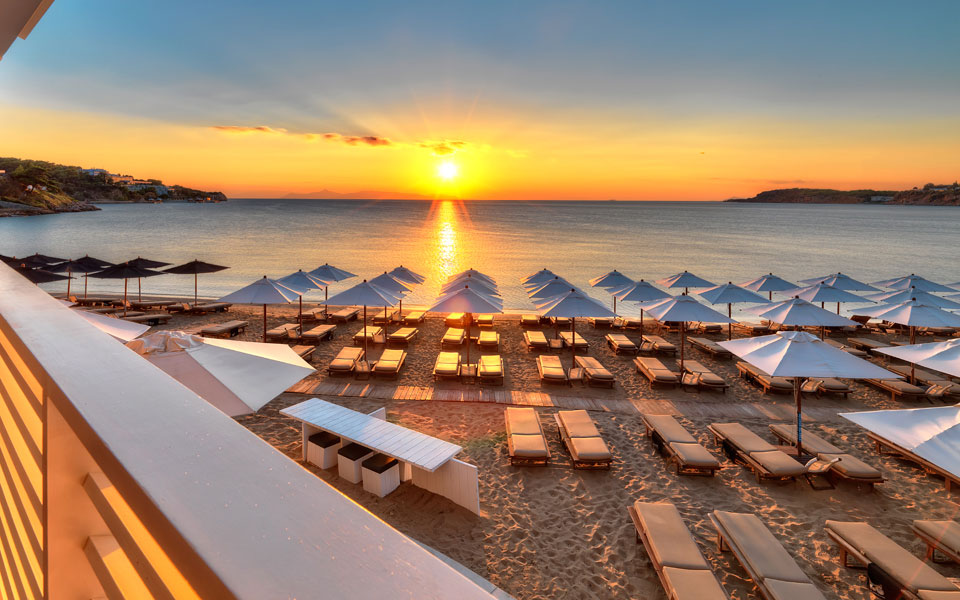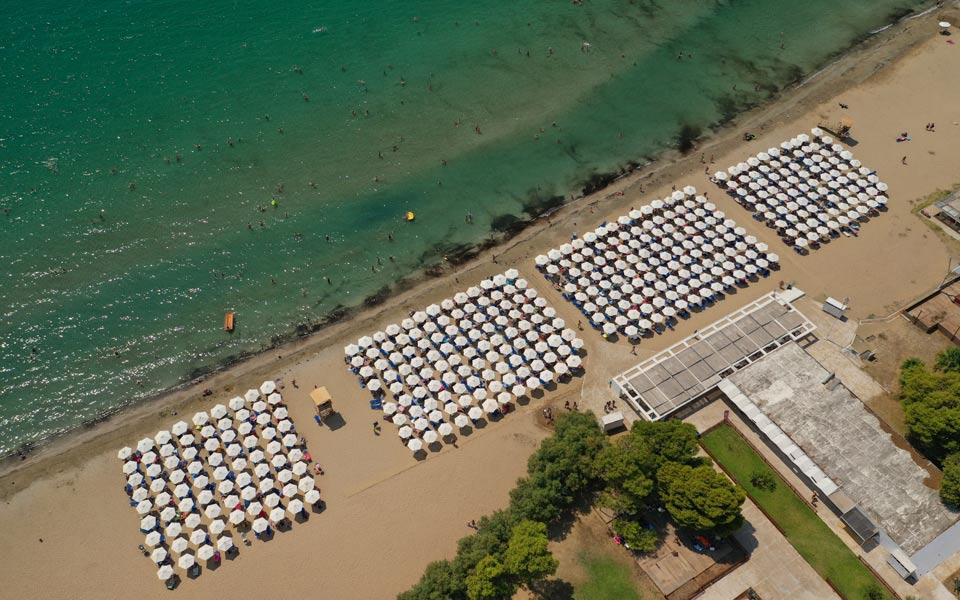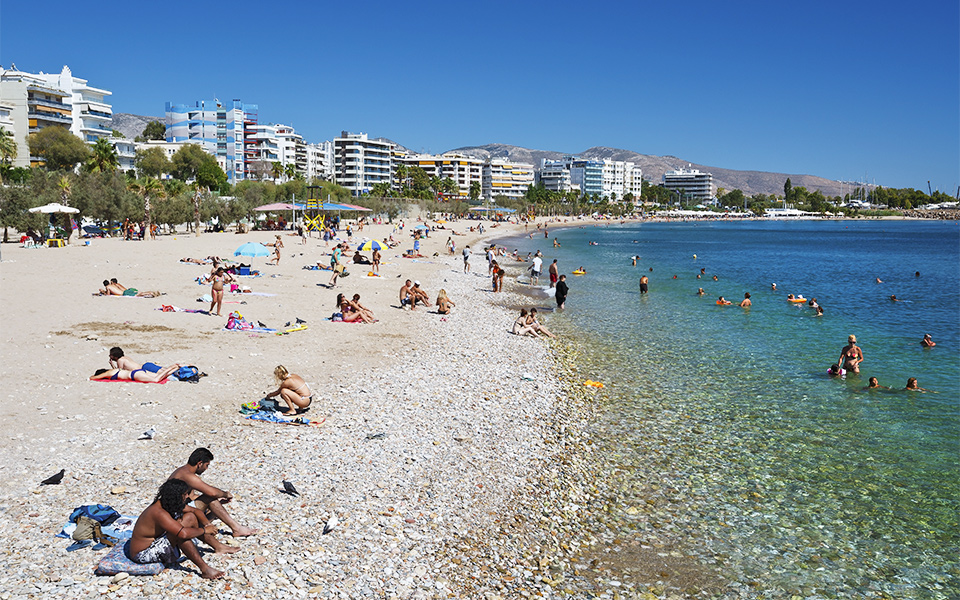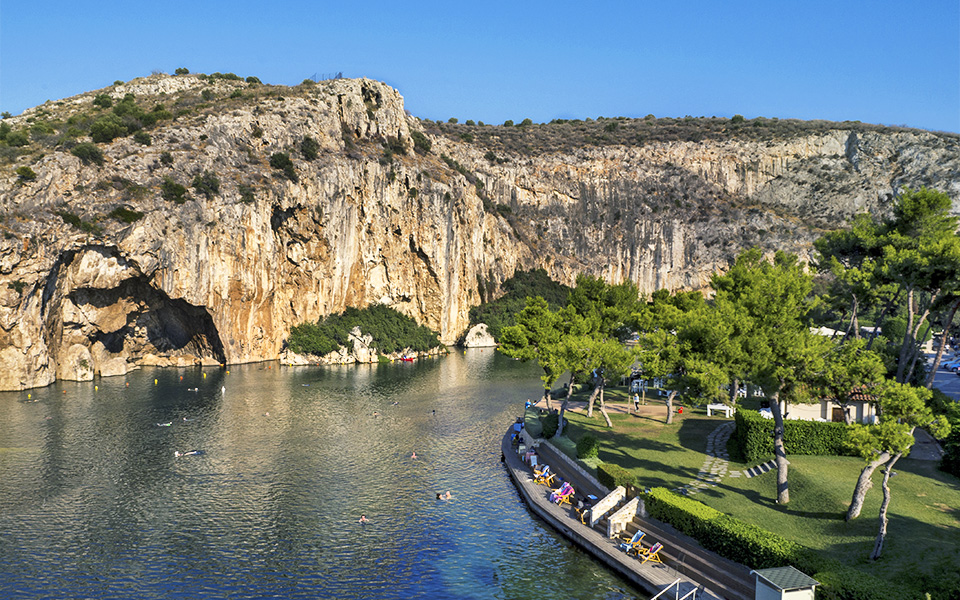“For most people, we’re simply the southerners. A group of us even called ourselves that in high school and formed a rock band.” M was born and raised in Voula on Athens’ southern coast and our conversation took place at one of the many seaside cafes in the “three Vs” municipality: that of Vari-Voula-Vouliagmeni.
The truth is that the areas of Voula and Vouliagmeni comprise the southernmost of the capital’s residential suburbs and are regarded by dwellers of the city center more as places to let your hair down on the weekend than as places to live. Central Athenians will admit to knowing their way to the bustling seaside town of Glyfada – whose popularity skyrocketed in the 1970s and 80s thanks to its American bars and Greek nightclubs – via coastal Poseidonos Avenue. But after Glyfada, they say, comes chaos.
“What can you say about a place that is basically known for its hospital?” laments M, referring to Voula, home of the Asklipeio, which was founded as a sanatorium during a major tuberculosis outbreak in the 1920s.
Before Voula became the built-up suburb it is today, it was countryside, with a forest and clean crisp winds blowing down from Mount Hymettus to its north and east, according to another local who joined us, Leonidas Economou, a social anthropologist and author of a book on Voula’s transformation into a suburb of the capital in the post-war period.

© Perikles Merakos
Up until the introduction of a major agricultural reform in 1920, the three Vs were part of a vast estate owned by the Petraki Monastery that had been formed in Ottoman times and endured through independence. Its urban transformation began in the period between the two world wars, with the development of two seaside resorts, the sanatorium, and the settling of a few hundred refugee families from Asia Minor.
Many traces of the past are still in evidence today, especially in the beautiful layout of Kato Voula, the oldest part of the suburb, which was designed along the lines of what were known as “garden towns” – like Psychico – in the 1920s and 30s, with so-called holiday villas designed by renowned architects in the 1940s and a plethora of smaller summer homes belonging to well-heeled middle-class Athenians.
Life in the area was determined from the outset by its location along the capital’s southern coast. Along with new vacation homes and apartments, hotels and nightclubs sprang up all along the seafront, also providing entertainment to city residents.
People who worked there in the busy summer season gradually began settling down, the refugee families grew and their children gave up farming for more urban professions. Nevertheless, the three Vs were mainly regarded as a destination for city folk looking for a seaside escape in the summer, and this is still the case to a certain degree.

© Shutterstock
“I’d say the local population triples over the summer,” says Nikos Michalos, the owner of the website Nou Pou, a culture and entertainment guide dedicated to the southern suburbs and named after the Greek colloquialism for them.
Business is always brisk in the summer, he says, though Voula has not quite taken off, compared to its neighbors, Glyfada on one side and Vouliagmeni to the other. Michalos believes that Voula’s time will come soon, however, as an ambitious project to upgrade and develop the so-called Athens Riviera gathers pace.
For the time being, and as a result of the health crisis, organized beaches and nightclubs in the area are only moderately busy, but the aroma of fried calamari still wafts from tavernas and groups of teenagers will be seen having a midnight dip on the weekends.
Vouliagmeni is a whole different kettle of sizzling fish, however, mainly thanks to its lake, a typical example of an attraction first discovered by foreign tourists and then by Greeks.
Tucked away in a cave beneath Faskomilia Hill, Vouliagmeni Lake is a geological phenomenon of unknown depths, healing spring waters and lush vegetation, which is listed in the Natura 2000 network of protected areas and designated by the Greek Culture Ministry as a site of exceptional natural beauty.

© Shutterstock
Attracting teens and pensioners, Greeks and foreign visitors, families and couples, it is also a year-round bathing spot thanks to its warm waters, heated naturally to 22-29 degrees Celsius, which are believed to have caused the erosion that shaped the lake in Hellenistic times.
Recognized as a healing spring thanks to its high concentration of salts and minerals that ease aches and pains, treat skin conditions and help aid post-traumatic recovery, the lake first became popular among older folk, who usually visit early in the morning.
In the past few years, however, visitors to the lake have grown more diverse thanks in part to the upgrade of its services, like the café-restaurant. The admission fee has also risen, though the lake is still good value for money compared to the area’s beach clubs.
It has grown in popularity among Russian and Northern European tourists too, who are more familiar with swimming in lakes, though this year is an exception due to the coronavirus restrictions on arrivals. This, of course, makes it the perfect time to enjoy the lake, which has reduced its admissions limit by 65% and introduced stringent health and safety measures.
This article was first published on ekathimerini.com












